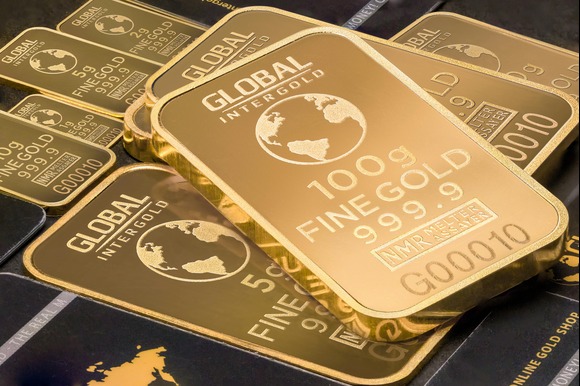
Photo by Michael Steinberg
Historic Rally Amid Economic and Political Turmoil
The price of gold has soared to an all-time high, surpassing $4,000 (£2,985) per ounce, as investors around the world rush to safeguard their wealth amid growing economic and political instability.
This marks the largest surge in gold prices since the 1970s, with values climbing nearly one-third since April, when US President Donald Trump’s new tariffs unsettled global trade markets.
US Shutdown and Delayed Economic Data Fuel Investor Anxiety
Market analysts say one of the main factors intensifying investor concern is the ongoing US government shutdown, now stretching into its second week, which has delayed the release of critical economic data.
Gold, widely known as a “safe haven” asset, tends to retain or increase in value during times of market turbulence and financial uncertainty. On Wednesday afternoon in Asia, spot gold—the live market price for immediate delivery—soared beyond $4,036 an ounce, matching the level reached in gold futures earlier this week. Futures represent contracts to buy or sell gold at a predetermined future date and are a key measure of market sentiment.
US Shutdown Provides ‘Tailwind’ for Gold Prices
According to Christopher Wong, rates strategist at OCBC Bank in Singapore, the US shutdown has acted as a “tailwind for gold prices.” He noted that investors have historically turned to gold during periods of political gridlock.
During the month-long shutdown in Trump’s first presidential term, gold prices rose by nearly 4%, reflecting investors’ tendency to seek safety in tangible assets during fiscal standstills. However, Wong cautioned that if the shutdown ends sooner than expected, gold prices could face a short-term correction.
Analysts Stunned by Gold’s ‘Unprecedented Rally’
Market observers have been surprised by the speed and magnitude of gold’s recent rally. Heng Koon How, head of markets strategy at UOB Bank, described the surge as “unprecedented,” linking it not only to political and economic instability but also to a weaker US dollar and increased participation from retail investors.
The rise, he added, is not merely a reaction to short-term uncertainty—it reflects a deeper global trend as central banks shift away from US Treasuries and reduce reliance on the dollar’s dominance.
Central Banks Lead Global Gold Buying Spree
Central banks across the world have been accumulating record amounts of gold in recent years, signalling a strategic move toward diversification. Since 2022, central banks have collectively purchased over 1,000 tonnes of gold annually, more than double the average of 481 tonnes per year recorded between 2010 and 2021.
Countries such as Poland, Turkey, India, Azerbaijan, and China were among the top buyers last year, reflecting a broad-based effort to strengthen financial reserves against global volatility.
Retail Investors and ETFs Drive Record Inflows
While institutional investors and central banks are key players, not everyone buying gold opts for the physical metal. A growing number of individuals are turning to financial products like exchange-traded funds (ETFs) that are backed by gold.
According to the World Gold Council, investments in gold ETFs have surged to a record $64 billion this year. Gregor Gregersen, founder of Silver Bullion, a major precious metals dealer and storage provider, revealed that his client base has more than doubled in the past year.
“Most of our clients are long-term holders,” Gregersen said, noting that the majority store their gold for more than four years. He added, “Gold will fall at some point, but given the current economic environment, I believe it’s on an upward trajectory for at least the next five years.”
Potential Risks: Inflation and Interest Rate Hikes
Despite the strong performance, analysts warn that gold’s price rally is not immune to risks. OCBC’s Wong explained that gold could lose value if central banks raise interest rates or if geopolitical and political uncertainties begin to ease.
He recalled that in April 2024, gold prices dropped 6% after Trump decided not to dismiss Federal Reserve Chair Jerome Powell, a move that temporarily stabilised investor sentiment.
Similarly, in 2022, gold prices plunged from $2,000 to $1,600 per ounce after the US Federal Reserve aggressively raised rates to control inflation following the COVID-19 pandemic, UOB’s Heng noted.
Federal Reserve Policies and Trump’s Pressure Add to Market Volatility
Market experts say that much of the current rally is driven by expectations that the Federal Reserve will soon cut interest rates, making gold a more attractive option. Wong added that Trump’s recent criticisms of the Fed—especially his attempts to fire Fed Governor Lisa Cook and his public pressure on Chair Jerome Powell—have further shaken confidence in the central bank’s independence.
Such interference, Wong warned, could “undermine faith in the Fed’s credibility as an inflation-targeting central bank.” In this climate of political friction and economic uncertainty, gold’s status as a reliable hedge has regained new importance.
Conclusion: Gold’s Shine Reflects Global Instability
As global markets remain volatile, gold continues to represent stability in uncertainty. With investors, central banks, and ordinary savers alike turning to the precious metal, analysts believe the current rally could continue—unless the global economy finds a clear path toward stability.




